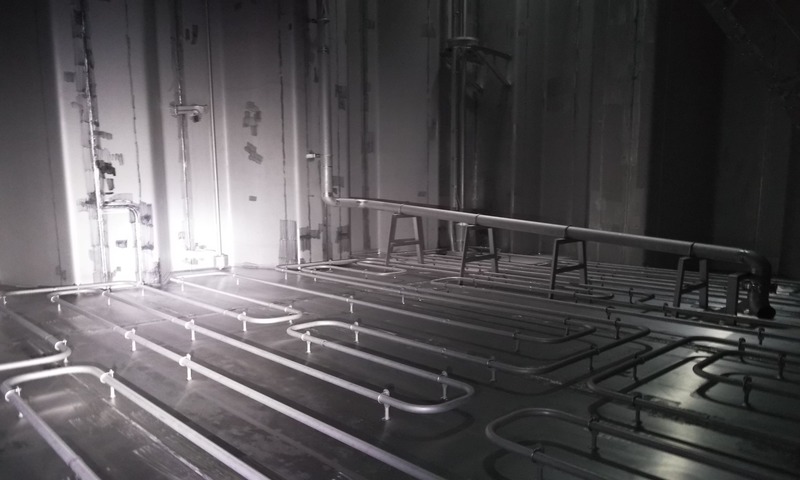Benefits of Passivation on Chemical tanker Stainless Steel Tanks

Introduction:
Chemical tankers, crucial to the global chemical industry, safely transport liquid chemicals, employing specialized vessels with key elements. These include various tank types (stainless steel, coated, mild steel) for diverse chemicals, segregation to prevent reactions and specialized pumps for loading and unloading. Stainless steel tanks, chosen for corrosion resistance and durability, are crucial for carrying corrosive substances. Maintenance, including passivation, is vital for preventing corrosion and ensuring longevity, Regular inspection preserve the passive layer and chemical compatibility . In this blog we are going to discuss about the benefits of passivation on chemical tanker stainless steel tanks.
Benefits of Passivation on chemical tanker Stainless Steel Tanks
Passivation is a process used to enhance the corrosion resistance of stainless-steel surfaces by forming a protective passive oxide layer. In the context of a chemical tanker cargo tank, passivation may be performed to maintain the integrity of the stainless steel cladding and protect it from corrosion.
Here are the key importance and benefits of passivation for SUS 316 tanks:
1. Corrosion Prevention: Passivation involves the formation of a thin, protective oxide layer on the SUS surface. This layer enhances the corrosion resistance of SUS 316 against various corrosive agents, including acids and chlorides. This layer helps prevent corrosion of the tank material, ensuring the structural integrity of the tanks and prolonging their lifespan.
2. Quality Assurance for Sensitive Cargoes: For vessels transporting sensitive or high-value cargoes, passivation is crucial to ensure that the cargo remains uncontaminated and meets the required quality standards. Some cargoes are highly sensitive to contamination like Octene, MEG, TDI, MDI etc. Passivation ensures that the tank surfaces do not introduce unwanted metals or particles into the cargo, maintaining the purity of the transported goods.
3. Removal of Contaminants: The passivation process typically includes cleaning the cargo tank surface, removing contaminants, residues, and impurities. This ensures that the tank is free from substances that could contribute to corrosion.
4. Safety Considerations: Corrosion or contamination of cargo tanks can compromise the structural integrity of the vessel, leading to potential safety hazards. Passivation contributes to the overall safety of the vessel by reducing the risk of leaks and structural failures caused by corrosion. This is particularly important when transporting hazardous or flammable cargoes.
5. Prevention of Pitting Corrosion: SUS 316 is known for its excellent pitting corrosion resistance. Passivation further enhances this property, preventing the initiation and growth of pits, which are localized areas of corrosion.
6. Surface Homogenization: Passivation helps in the formation of a uniform and even oxide layer across the tank surface. This homogenization contributes to consistent corrosion resistance throughout the tank.
7. Improved Aesthetics: Passivation enhances the appearance of stainless steel tank surfaces, providing a cleaner and more aesthetically pleasing finish. This is particularly important for cargoes where the visual appearance of the tank is relevant.
8. Extended Equipment Life: By preventing corrosion, cargo tank passivation helps extend the life of the ship's equipment, reducing the frequency of repairs and replacements. This can result in cost savings for ship owners and operators. Passivation contributes to the longevity of the cargo tanks by protecting them from the corrosive effects of the carried cargo. This helps in reducing maintenance costs and increasing the operational lifespan of the vessel.
9. Minimized Downtime: Well-maintained and passivated cargo tanks contribute to the smooth operation of cargo loading and unloading processes. They reduce the likelihood of delays and disruptions caused by equipment failures or contamination issues. Regular passivation can help minimize downtime associated with maintenance and repairs.
10. Environmental Protection: Cargo tank passivation helps prevent leaks and spills, reducing the risk of environmental contamination. This aligns with environmental protection goals and regulations.
11. Enhanced Resale Value: Proper maintenance, including regular passivation, can contribute to the vessel's overall condition and, consequently, its resale value. Buyers are often more inclined to invest in vessels with well-maintained equipment.
Conclusion:
In conclusion, the meticulous practice of passivation in maintaining chemical tankers, particularly those equipped with stainless steel tanks, goes beyond preventing corrosion. When executed properly, passivation significantly extends the vessel's lifespan, instilling confidence in charterers regarding cargo safety. This not only enhances commercial viability but also contributes to environmental protection by mitigating the risk of leaks. Ultimately, the synergy of effective passivation aligns with heightened safety standards, bolstering both commercial and environmental parameters for the collective benefit of stakeholders in the chemical shipping industry.

Capt Neeraj Bharti
Master Mariner with excellent operations, Resource Management, & Communication skills demonstrated by 18 years of experience. I am currently assisting principals for their tank cleaning operations mainly for DPP to CPP conversion. During my career at sea, I have done 4 Yard deliveries, 4 dry-docks , unlimited DPP to CPP conversions and wall wash tank readiness.
Leave a comment
View more
Give your career a boost with S&B professional services.
CV Prep/EvaluationMore Jobs
Ship management
Philippines
Training Superintendent
Marine tech
Abu dhabi
Technical Lead
Ship management
Singapore
Technical Superintendent
Interview Prep/Mentoring
Find your polestar with the host of experts available on our platform
Know more

